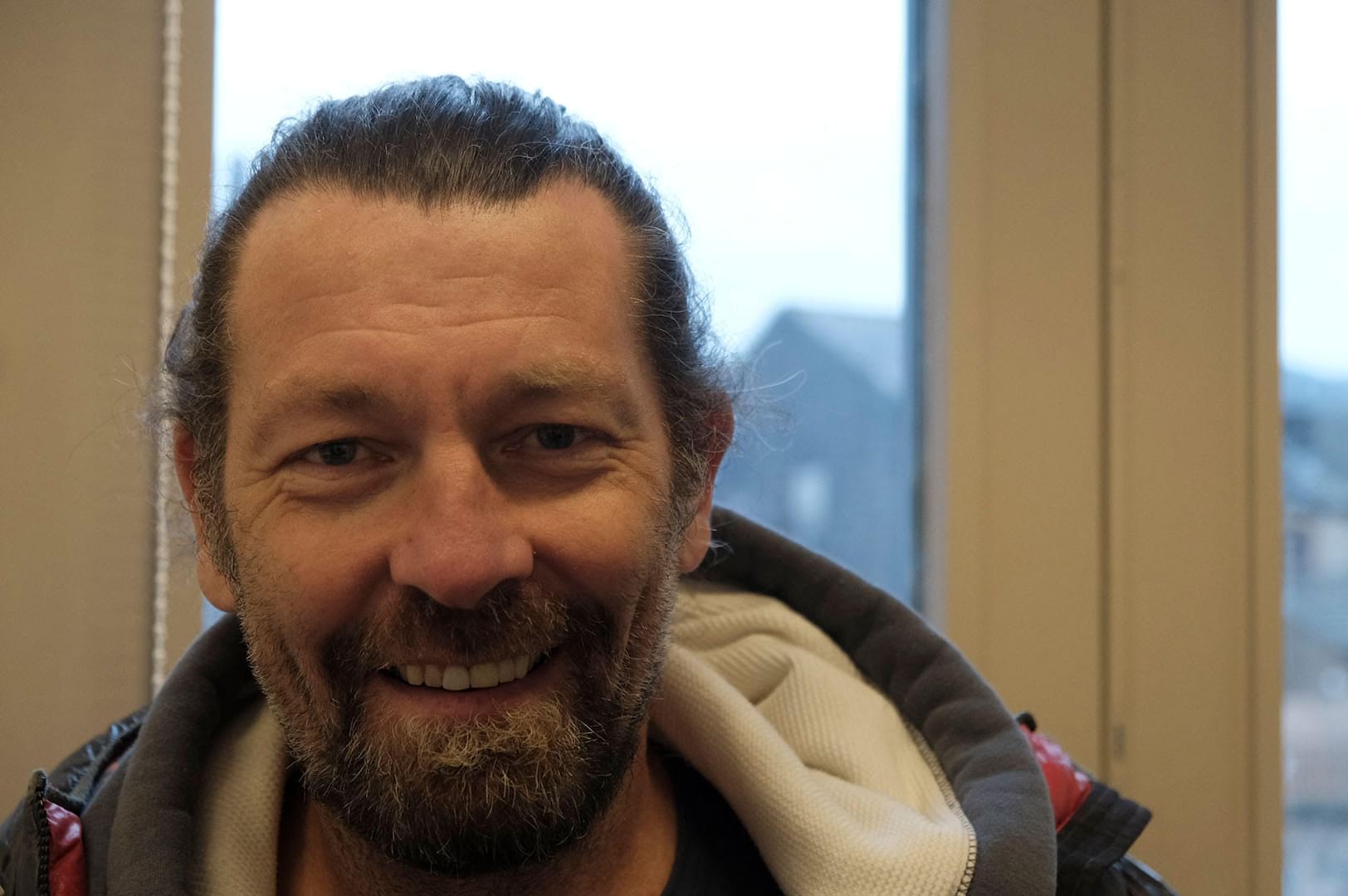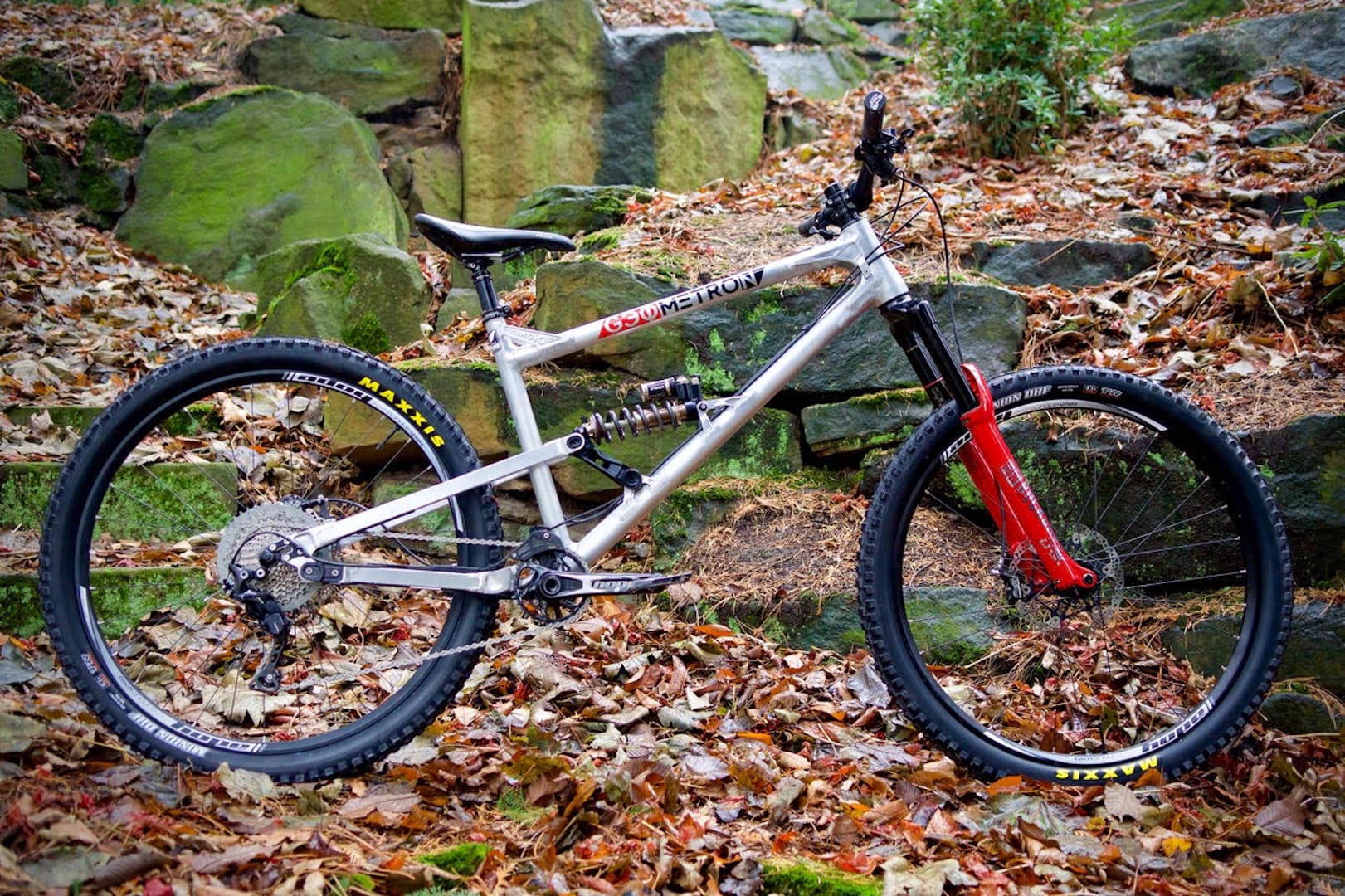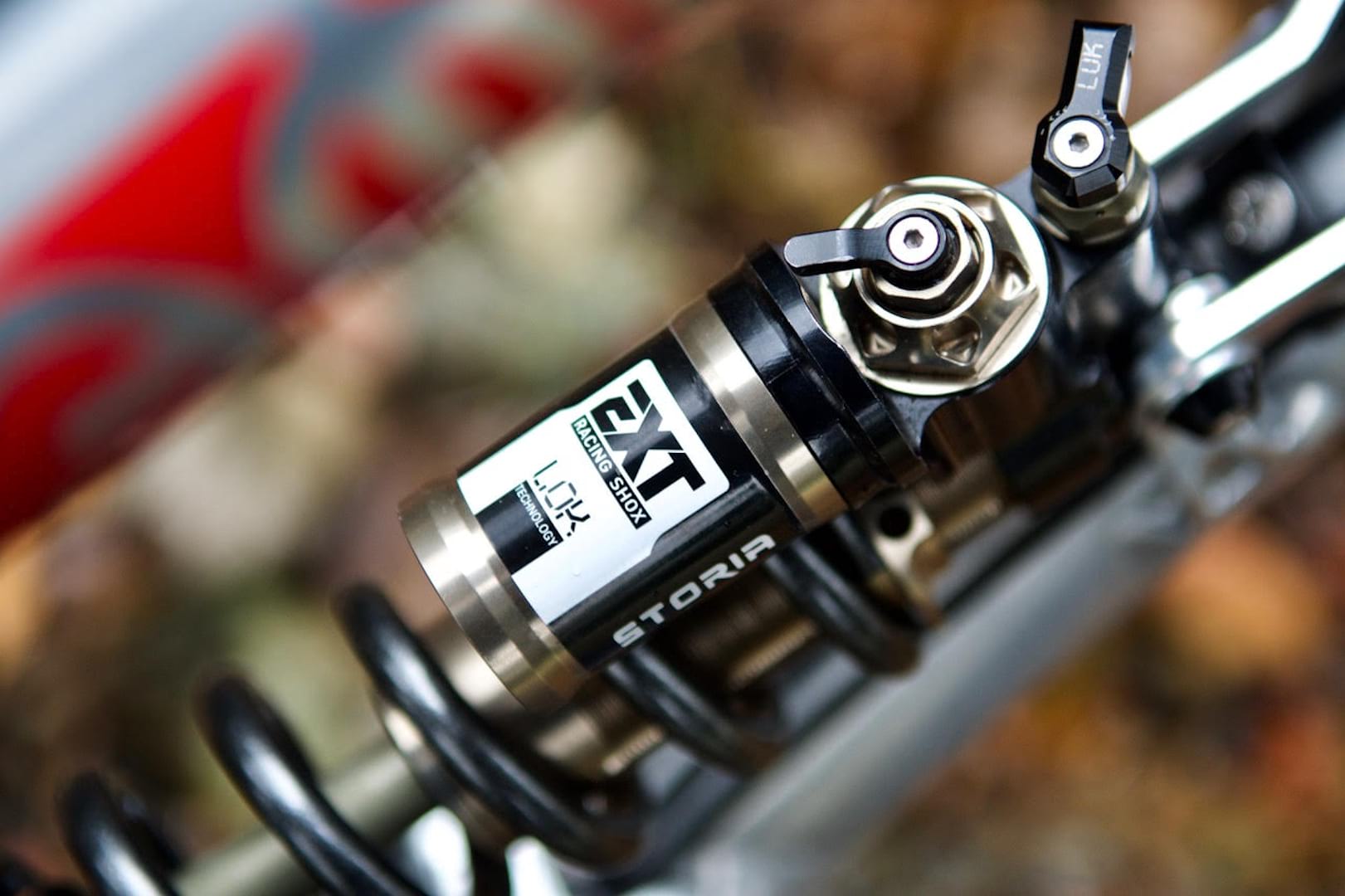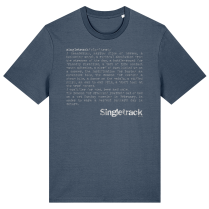Chris Porter recently made the trip up to Singletrack Towers to deliver a bike for the bike test of Issue 123 of Singletrack Magazine. Since he’d come all that way, we thought we’d make the most of his time, so after a quick lunch and discussion which ranged through politics to celeriac and the best veg to grow at home, we sat down in front of the cameras for a bit of a chat. You can watch the edited interview here, or if you prefer to read your words rather than watch them, read on…
[wcm_nonmember]
Thanks for tuning in..
This feature is for members only. If you have an account, please log in. If not, you can get access by registering here for free.
Latest Singletrack Merch
Buying and wearing our sustainable merch is another great way to support Singletrack
Members get access to exclusive content like this but they also get..
- Fewer ads
- Post comments to stories
- Join in forum discussions
- Sell unwanted kit for free in our Classifieds
- Automatic shop discount on Singletrack merchandise
- Access more members only content
Premier members get more
- Magazine content in print 6x/year post free
- App access to every new issue of Singletrack
- Ad free website
- Big discounts on shop merchandise
- Access downloads like GPX files, PDFs and even iBooks
- Full mag archive access to all Singletrack back issues
Premier membership starts at just 1.99
[/wcm_nonmember]
[wcm_restrict]
Hannah: Hi, welcome to the Singletrackworld.com. I’m Hannah and I’m here with Chris Porter who has been dropping off a new test bike for us today, a Geometron, so we thought we’d grab the chance to speak to him a bit about…well…shall we see what? Thanks for coming up Chris. Let’s start with: you were dropping off the Geometron because you don’t like to just stick a bike in a box and send it on its way. You wanted to set it up for Barney.
Chris: Yeah.
Hannah: So what is it you’re looking for in that suspension set up?
Chris: Well, what we’ve been doing over the last few years is having a lot more customer interaction and you know, that comes from the whole ethos of Mojo when we started – that it was a service centre. We started with service. It wasn’t a distribution model that we started with, and the Geometron allowed us to get back in touch directly with our customers and it’s been really good. It’s been a real education about people’s riding, people’s riding styles, people’s riding habits and it allows you then to make a better job of the bike for the customer. On a modern bicycle you’ve got so many adjustment options. You literally can’t just put a bike in a box and expect it to be excellent. The modern bikes have the capability to be excellent – but you can also set them up to be really wrong. So we like to make sure that we’ve tried to do our best job that we can with the customer rather than say “Okay, he’s 95 kilos…then he needs this spring and he needs that. That pressure in the fork is going to be about this clicker on the shock and about this clicker on the fork.” That’s kind of, that’s a starting point, but then you need to see the rider and you need to say “Okay, well he’s on flats, so he’s not as far forward as a rider on clips so we’re going to need to change that rear and we’re going to need to soften the front”. And maybe he’s a rider that’s got a shoulder injury and it’s stopping him getting you know, really pushing the bike around. So you’ll change the settings of the suspension to make sure that we can still load the front without him having to push outside of his personal envelope. And you know, you can’t do that over the internet.
Hannah: No.
Chris: You have to go and see someone and that’s what we do a lot of. We try and do that one-to-one thing.

Hannah: So that’s quite a subtle set of tweaks, I mean that’s almost at the level of Olympic bike set up, you know, putting little shims in here and there, so does that mean that there’s an overall feel that you’re aiming for or is it really bespoke to every person?
Chris: No I’ve got my ideas obviously. I’m a guy with pretty strong opinions of what should happen and what a bike should do, but when you watch a rider on a bike, what you want to do is try and give that rider as much confidence in the situation that the rider wants. So not everyone’s going to want to ride the tracks that I want to ride. Not everyone’s going to want to ride the kind of things that I want to do, so I’ve got to look to change the bike set up that I’m used to, for me, and make it suit him or her, for what they want to do. And I think the whole thing about individually setting up the bike is that you’re trying to make that person comfortable with the bike. You’re watching them, you’re looking for that confidence, and that’s what you do. You try and make them get as much as they can out of that bike, rather than just putting in presets.

Hannah: You are kind of well-known for doing your own kind of mods on bits of suspension and things, so does that mean you don’t think that there’s anything in the market that quite does what you want it to, or is that what you want it to, but the general public should stay well away of tweaking stuff?
Chris: Well I think one of the issues with the bicycle industry is we’ve got real fast turnover of designs so you get a problem with a bicycle part and the person that solves it is the designer, so they just design a new one.
Hannah: Right.
Chris: So you never actually get to the root cause of it. They just design their way out of the problem. But hang on a minute, somebody’s just bought that, we’ve got to solve it for them now, we can’t wait till next year. So my thoughts have always been you know, if it needs hacking or changing you find a solution with what you’ve got and that’s what we do, I guess different to the rest of the industry, is that we try and fix what’s already there. Try and make a really good job out of what’s already there, rather than just designing another thing. Another thing that goes in landfill next year because it’s not this year’s thing or you know, it’s like there’s just so much new being made all the time and not necessarily any better. It’s been made new just because it’s new rather than because it’s an improvement.
Hannah: So I noticed you’ve got a different shock to what I’ve seen before on the bike that you’ve just dropped off. So what is good about that, that’s making you pick it to put it on your bikes?
Chris: EXT, we’re dealing with a company called EXT now, Extreme Shox, and we just love them. We think it’s great. If we think of the word ‘cooperation’ and how close it is to the word ‘corporation’, but how different their meanings of those words are, that’s the difference. The guys at EXT just act like a family. They’re great, you know, they’re really good people to deal with.
Hannah: And is their suspension any good though? Because you know they can be lovely, but if the suspension’s no good…
Chris: Yeah, yeah, absolutely, he’s a crackpot, he’s a great character, I love Franco to bits but he’s gathered a set of really good individuals around him who work the suspension programmes for him. And they’ve made a really good bicycle shock absorber. In the bicycle world there’s a lot of feature selling, so if one suspension company makes a twin tube shock absorber everyone else has got to make a twin tube shock absorber. If one suspension company does high speed and low speed compression and high speed and low speed rebound adjust then everyone’s got to do that. You’re selling on features instead of selling on performance. Suspension on a bicycle must be progressive because there’s no chassis weight at all and the sprung weight versus the unsprung weight are almost the same, so there’s no real chassis weight, so the suspension must be progressive – and the damping must be progressive. And that’s really difficult to do with the kind of valves that give you an adjustment.
Most of the adjustment valves that we’ve got in bicycling are pre-loaded sprung valves and they give you a real sort of poppy feeling and then they try and sell you these as a design feature and they’ll say [Chris puts on an American accent] “Oh it’s digressive valving man, this is what we want, digressive valving” and it’s not what you want because we don’t have a ton chassis to allow the wheel to pop like this [gestures up and down] and keep the chassis. We want it really progressive [puts on American accent again “we don’t want it digressive, we want progressive”. And the EXT shock puts a lot of oil through the shims and shims are a demand valve, old fashioned, analogue. When they want more oil flow they’ll bend more. When you want less oil flow they’ll bend less. You don’t need electronics or any fancy technology. That’s what you need. You need to spend time riding the bike, playing with the shim stacks, trying things. And the other thing with EXT is that they are real sticklers for quality control – so I’ve never seen as many dynos in a building in my life.
Hannah: No?
Chris: They have test dynos at every single bench and they have portable dynos. They’ve got like seven or eight shock dynos that are just lying around in the front of the building that might go in a van to do a bit of testing with someone. And every single shock they do gets dyno’d to make sure that it reaches the damping levels at two different speeds – so they do it slow, they do it fast – and they make sure that it reaches the damping force that it should in two different clicker settings as well. So if it doesn’t, it comes apart until they find out why it didn’t. It may be a shim was bent or – well, it would be hard to do that because they check every single shim, you know. They’re quite careful, and that’s really nice because that’s what I used to do for my shocks and I’m seeing someone being as careful as I was.
Hannah: So there’s a degree of confidence in it then, yeah?
Chris: Oh yeah, absolutely.

Hannah: So if that’s what you’re looking for in the shock at the rear, what are you looking for in the fork and who is delivering it – or who looks like they might deliver it in what’s coming?
Chris: Ah, God. {Looks at ceiling}
Hannah: Do you have an opinion on that?
Chris: Oh God, the bicycle fork is so close to its design limit. It’s amazing that more of them don’t just fail, they’re horrible. We’ve got fixed bushing systems which create a huge amount of leverage on that lower bushing so it creates a lot of shear force on the bushings so you get a lot of bushing binding and as the fork goes through its travel that doesn’t change in most telescopic fork applications – well, all others. You’ll have a fixed bushing under the seal and then you’ll have a sliding bushing at the other end, so as the fork goes into its travel the leverage on that lower bushing lessens and the fixed bushings create that binding problem straight off. Then you put a spring on one side and a damper on the other and then you’re binding the fork by literally bending the chassis like this because we’re holding… Your body weight’s up here but it’s supported on the centre line of the wheel so it’s now binding like this [Chris leans off to one side]. And then you hit it fast, hit a bump and we’re resisting on the damper, so it does that [Chris leans off to the other side]. So now we’ve got the fork chassis doing this [shifts side to side] and you can literally see it and feel it. You can watch it in slo-mo on an iPhone and you can see it, you can literally see it happening.
So to improve this, considering this was what was happening when we had a 20mm axle at 110mm wide, how are we going to improve that? I’ll tell you what, let’s go wider, let’s go Boost, let’s reduce the axle size and let’s use a QR with no pinch bolts. So they’re getting worse and worse, literally the forks are at their design limit, something needs to change. Obviously people have noticed this because we’ve got things like the Motion [Ride], we’ve got things like that Dave Weagle thing…
Hannah: Trust Performance?
Chris: Yeah. Things are happening, people are looking for other ways of solving the problem, but because the bicycle fork industry is Taiwan based, no one else can cast magnesium lowers. We need to come away from that whole cast magnesium lower thing full stop because we need to get some decent sliding bushings in there.
Hannah: So is that our future then? In the UK, this is a way we can make a difference?
Chris: Well I mean what we’re doing at the moment is we’re going to try and do, well not try and do, we’re deep in to doing a dual crown kit for the 36 fork. It’s been working really well. By holding the fork legs more rigidly parallel, the fork works better anyway. It doesn’t solve the bushing issue. It masks some of the problem with the bushing issue so it works better. When you look at a single crown fork, again you know, slo-mo that, watch someone riding through some braking bumps, someone riding through braking bumps without actually touching the brakes and you’ll see that the forks are flexing three, four, maybe even five degrees. And if they’re flexing backwards and forwards three, four, or five degrees then they’re also doing that in a turn. So they’re doing this [mimes twisting in all directions]. They’re moving all over the place. It’s a wonder more of them don’t creak – not that they do creak – it’s a wonder more don’t.
Hannah: It’s quite scary, when you do get a fork like that out of like a lower-end fork, out of its depth and you really experience that, that’s quite something…
Chris: And if you can feel that and you weigh a hell of a lot less than me, but I’m…
Hannah: That’s very kind of you to say {laughter}.
Chris: Well I wouldn’t dare guess, it’s probably a state secret. But the average mountain biker looks more like me you know, he’s quite a lump and we’re all getting older and we’re riding longer travel forks that are getting lighter and lighter and lighter. There’s just not enough material. I mean literally if you take a fork apart and get hold of the crown steerer unit you can literally push it in and out and measure that. You can measure that. Push it in, measure it, pull it out, measure it, it’s moved. So if it’s moving by hand, it’s not good enough. I don’t know, I mean I don’t know where the future lies but I know that we need to be looking at different solutions for sure.
I can’t afford to fix it. If I could I would definitely be doing a fork but…yeah.
Hannah: Oh well there you go, so if there’s an investor out there that wants to see a much better fork then you’re the man to come to with opinions and ideas.
Chris: Oh good God no. An investor would not like me.
Hannah: {Laughter}
Chris: No. No an investor would not like me.
Hannah: {Laughter} okay, final question then because I do have to rush off unfortunately.
Chris: That’s alright.
Hannah: And it’s cold…
Chris: We haven’t got back to politics yet have we?
Hannah: Yeah, okay…so this could be politics. Let’s do the environment. You said about things not being particularly strong and invention for the sake of new things.
Chris: Yeah, yeah.
Hannah: So, what does the bicycle industry need to do on this sort of environmental front?
Chris: I mean on a, you know, on a scale of the big questions, the bicycle industry is just fluff isn’t it? What we are doing is fluff. We’re not doing anything useful for the world, at all, you know, we’re…
Hannah: But we should be. Bicycles could change the world.
Chris: Bicycles could change the world but mountain bikes are not the same as bicycles.
Hannah: No they’re not.
Chris: We go and ride our mountain bikes for fun. We don’t use them as transport. In Britain we haven’t got, you know, we can’t… Our system has been organised to create car travel for years. You won’t get planning permission to build a business in the same place you’ll get planning permission to put houses. The things have been separated to make us drive our cars and the system has been skewed to the private car, to the point where most of the bicycle usage is on old railway tracks. Well they were quite useful weren’t they, railways?
Hannah: As railways? Yeah.
Chris: Yeah, as railways, or the canal paths, which could still be quite useful for moving heavy, slow…
Hannah: It would be very slow round here! [There are lock gates every few hundred metres near Singletrack Towers]
Chris: But slow turnover goods. You don’t need to be moving sand quickly. But you see sand lorries driving, you know, lorries driving their stuff around at 60mph. We don’t need to move sand quickly. There’s a lot of it around, but that’s our system, you know, that’s how it’s been done. So in terms of environmental… we can’t defend ourselves just because we’re bicycles, what we’re doing is fluff. The best thing we can do is to carry on using the stuff that we are using for as long as possible and that’s something. We should be building bicycles that last.
Hannah: So maybe we don’t need any suspension at all, we just need all rigid bikes…
Chris: Well…
Hannah: …and you know, take them to the shops as well.
Chris: If that’s what you’re enjoying riding that’s absolutely what you should have. I actually quite enjoy riding off-road and as we built the bikes more and more capable we’ve ended up riding even more challenging off-road trails, so I certainly won’t be looking to build a hardtail anytime soon. And my weekly shop, we’re not getting pannier mounts on the Geometron anytime soon so you know…

Hannah: {Laughter}. It wouldn’t be very good for taking eggs home would it? Down the trail {laughter}.
Chris: No, probably not. But yeah, no. We should just make the stuff last longer and make it better, just make it so that you can fix it. That was one of the things that I was proud of at Mojo. All the Fox stuff that we fixed that didn’t end up worth nothing, being resented, propping a garage door open because it no longer worked – we fixed that stuff. You know obviously some stuff you can’t, and some things are going to be just bent beyond recognition but rather than replacing assemblies – you know, taking a cartridge, throwing it out and putting a new one in – we were fixing it, using our skills to fix stuff, and that’s changed a lot in mountain biking now. You get a warranty problem with a mountain bike product now and you get a new one. And for the first couple of times you think “I got a new this, that or the other, got a completely new product. I feel really good about that”. And after the fourth, fifth time you start to think “Was that really worth what I paid for it? And why don’t they do some testing before they let it out to the public. And why didn’t they have a system to look after it?”. You know, and there’s not that sort of attitude in the mountain bike industry at the moment. It’s all been driven… That’s wrong to say that, there is that attitude. It’s all in small places. The big corporates are not doing that but there are a lot of good people doing good work in mountain biking, keeping things going and that’s what we should encourage.
Hannah: So support your small local bike shop, your local innovator and maybe your local magazine as well?
Chris: Oh yeah definitely, yeah, yeah. I think yeah, support your local everyone, but if they’re not worth supporting don’t struggle with it, find the guy that is worth supporting – and that person will come along. And there’s a lot of good people out there. Yeah, so yeah support your magazines for sure, yeah.
Hannah: Well yes. Find the good people in life and support your local magazines! That sounds like a good life message and we’ll leave it there.
Chris: And we didn’t get onto Trump or Brexit. Next time.
Hannah: {Laughter}. Trump or Brexit we can definitely do when we’ve got longer, a lot longer {laughter}
Chris: And when it’s a bit warmer. I’m literally shivering.
Hannah: Yeah {laughter}. I’ll book you a bed and breakfast next time {laughter}. Thank you very much.
Chris: Cheers Hannah.
Hannah: Thanks for joining us.
[/wcm_restrict]





People who don´t get the telescopic fork argument, he didn´t say you cannot design good telescopic fork, just that there isn´t one. Why? Because manufacturers got their priorities wrong (to be honest, it´s mostly what market wants what they make, lighter and lighter forks with more and more travel, more stupid design standards that no one needs or asked for and are not solving any real design issue). Chris obviously wants every part of bike to work as good as it possibly can, what´s wrong with that? So many people seems to complain that their extremely overpriced forks creak, yet if someone made fork which would have all the features needed to work very well, no one would buy it, because it would weight I don´t know, 500g more than what FOX or RS markets as the best fork out there… Forks are getting lighter mostly because we are using very small amount of oil in them, using air springs instead of coil(both of those means modern forks need more maintenance than older forks needed and still when it comes to sensitivity, most people who tried old school marzocchi forks with coils and open bath dampers would say they worked better and lasted years without having to service them, not that they wouldn´t benefit form service obviously) . Running magnesium lowers on pretty much every single performance fork out there is another easy and cheap way to make forks lighter. But…Magnesium is just too soft material to allow sliding bushings, so we have fixed ones. So yeah, it´s not that it isn´t possible to make damn good telescopic fork, it is, but no one would buy it, people are stupid like that sadly, Oh, and as far as I remember, his favorite fork of all time is telescopic fork, USD Mojo X1.
I always enjoy listening to Chris Porter.
I’ve suggested it before… give him a regular magazine slot 🙂